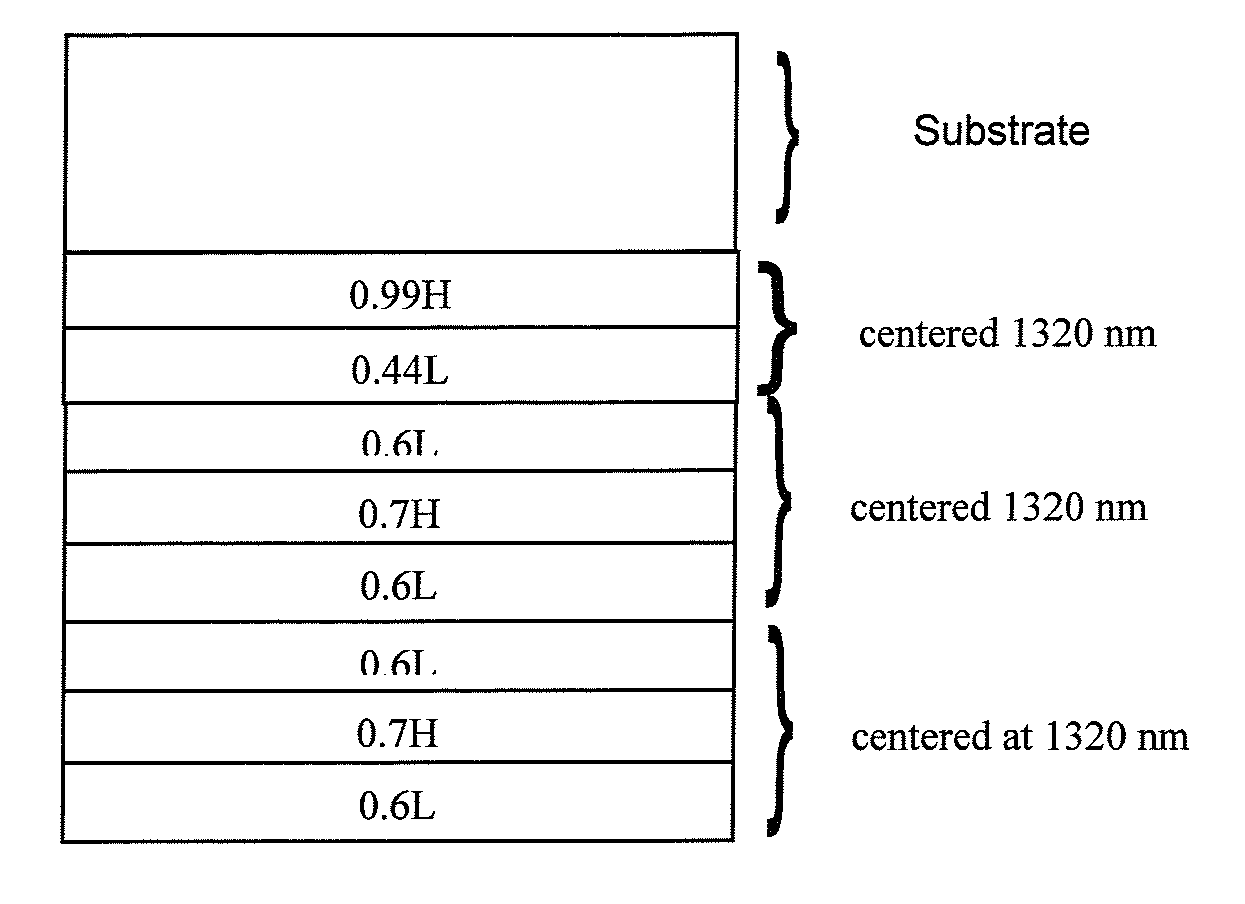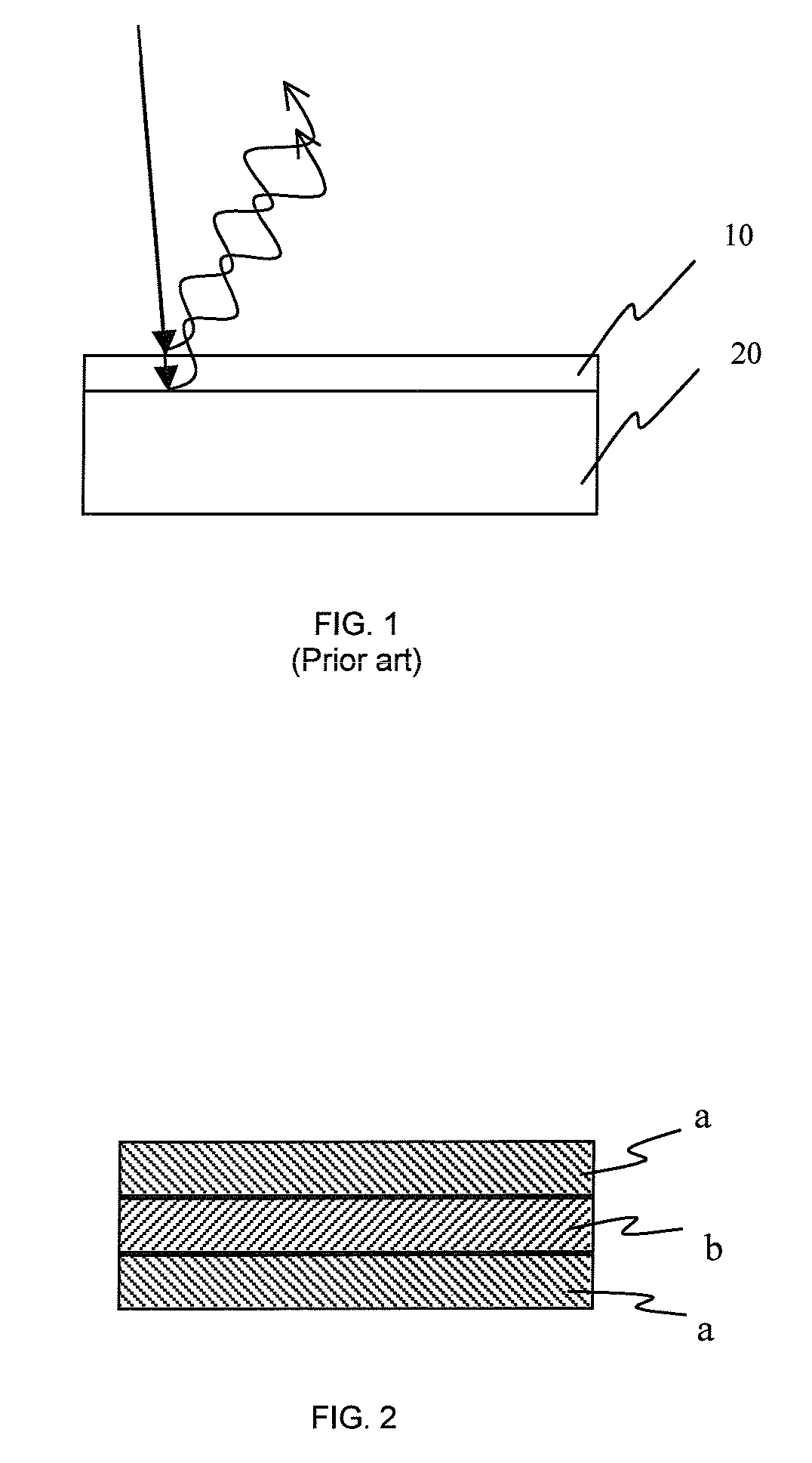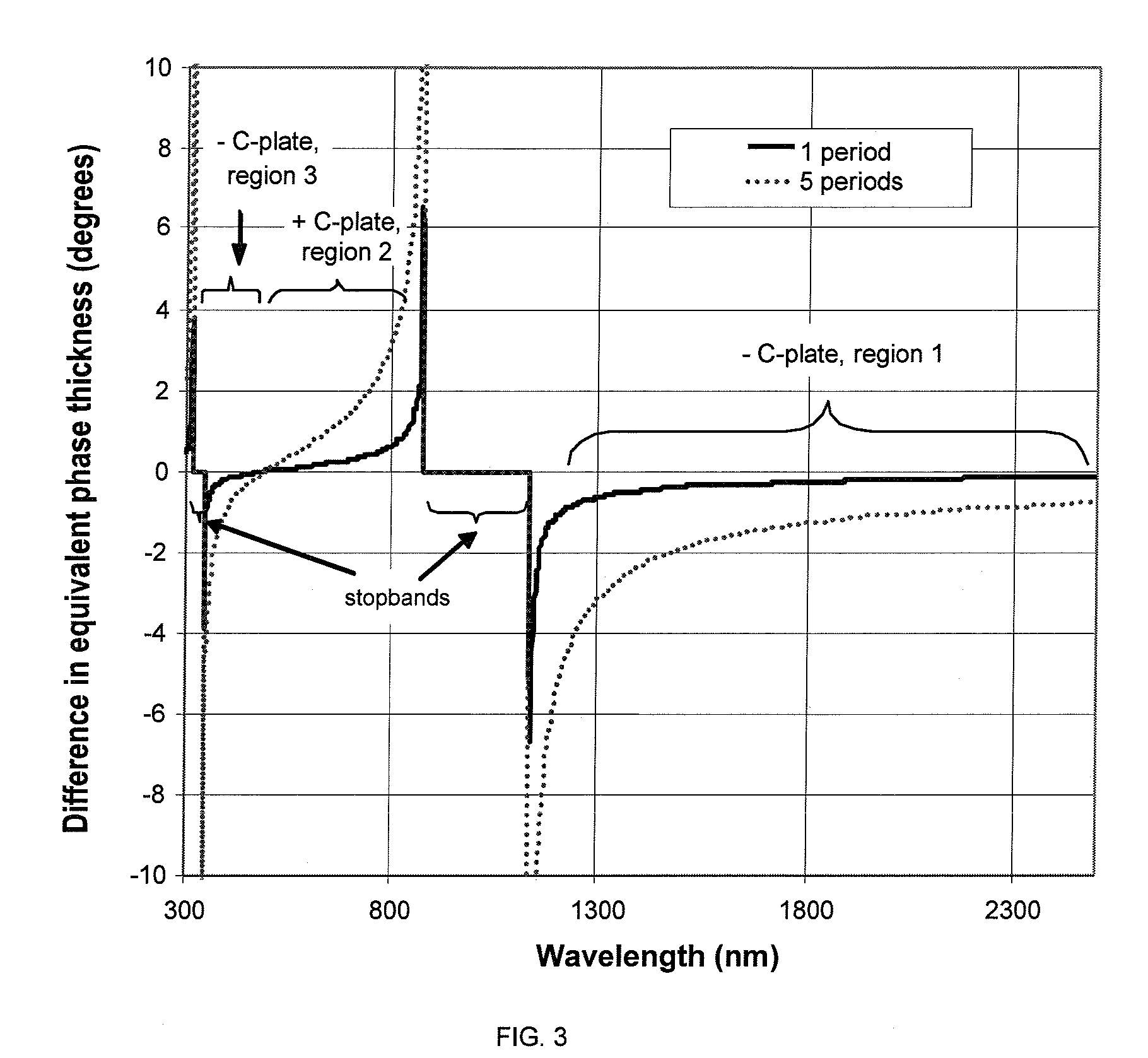Thin-film design for positive and/or negative C-plate
a technology of c-plates and thin films, applied in the field of thin films, can solve the problems of large cost of growing and polishing large crystal plates, birefringent elements typically not generally suitable for compensation applications, and the c-plate does not provide any net retardation for normal-incident rays
- Summary
- Abstract
- Description
- Claims
- Application Information
AI Technical Summary
Problems solved by technology
Method used
Image
Examples
Embodiment Construction
[0036]As discussed above, thin films are often used in anti-reflection coatings and / or in interference filters (e.g., thin film interference filters). In each case, the thin film coatings typically include at least one layer having a refractive index n and a physical thickness d selected such that the optical thickness (n times d) of the layer is equal to one quarter of the wavelength of the incident radiation. These quarter wave (QW) layers use the principles of interference to obtain the desired optical effects.
[0037]For example, referring to prior art FIG. 1, a thin film layer 10 having a refractive index n1 is shown on a substrate 20 having a refractive index n2. With n1 less than n2, and with the n1 and the thickness of the thin film layer d1 selected to provide an optical thickness equal to a quarter wave of the incident radiation λ, the light reflected from the air / thin-film and the thin-film / substrate interfaces will be exactly 180 degrees out of phase. This 180 degree phase...
PUM
 Login to View More
Login to View More Abstract
Description
Claims
Application Information
 Login to View More
Login to View More - R&D
- Intellectual Property
- Life Sciences
- Materials
- Tech Scout
- Unparalleled Data Quality
- Higher Quality Content
- 60% Fewer Hallucinations
Browse by: Latest US Patents, China's latest patents, Technical Efficacy Thesaurus, Application Domain, Technology Topic, Popular Technical Reports.
© 2025 PatSnap. All rights reserved.Legal|Privacy policy|Modern Slavery Act Transparency Statement|Sitemap|About US| Contact US: help@patsnap.com



